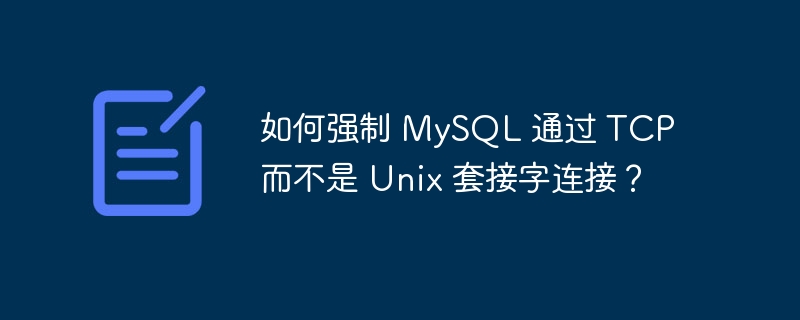

Programs such as mysql and mysqldump using the MySQL client library support connecting MySQL to server files and naming through multiple transmission protocols (such as TCP/IP, Unix sockets) Pipes, shared memory, etc.
For a given connection, if no transport protocol is specified, it is identified as a separate task.
A connection to localhost will result in a socket file connection on Unix and Unix-like systems, otherwise a TCP/IP connection to 127.0.0.1. If a protocol must be specified specifically, this can be done using the --protocol command option.
The following table shows the allowed values for --protocol and tells the platform where each value applies. Note that these values are not case-sensitive.
| --Protocol value | Transmission protocol used | Applicable platform |
|---|---|---|
| TCP | TCP/IP | All |
| SOCKET | Unix Socket File | Unix and Unix-like systems |
| Named Pipes | Windows | Shared Memory | Windows |
The above is the detailed content of How to force MySQL to connect via TCP instead of Unix socket?. For more information, please follow other related articles on the PHP Chinese website!
 How to undo after gitcommit
How to undo after gitcommit
 The main reason why computers use binary
The main reason why computers use binary
 HTTP 503 error solution
HTTP 503 error solution
 How to solve the problem of black screen after turning on the computer and unable to enter the desktop
How to solve the problem of black screen after turning on the computer and unable to enter the desktop
 How to define variables in golang
How to define variables in golang
 How to return to the homepage from an html subpage
How to return to the homepage from an html subpage
 Yiou Exchange app download
Yiou Exchange app download
 Permanently free oa system
Permanently free oa system




